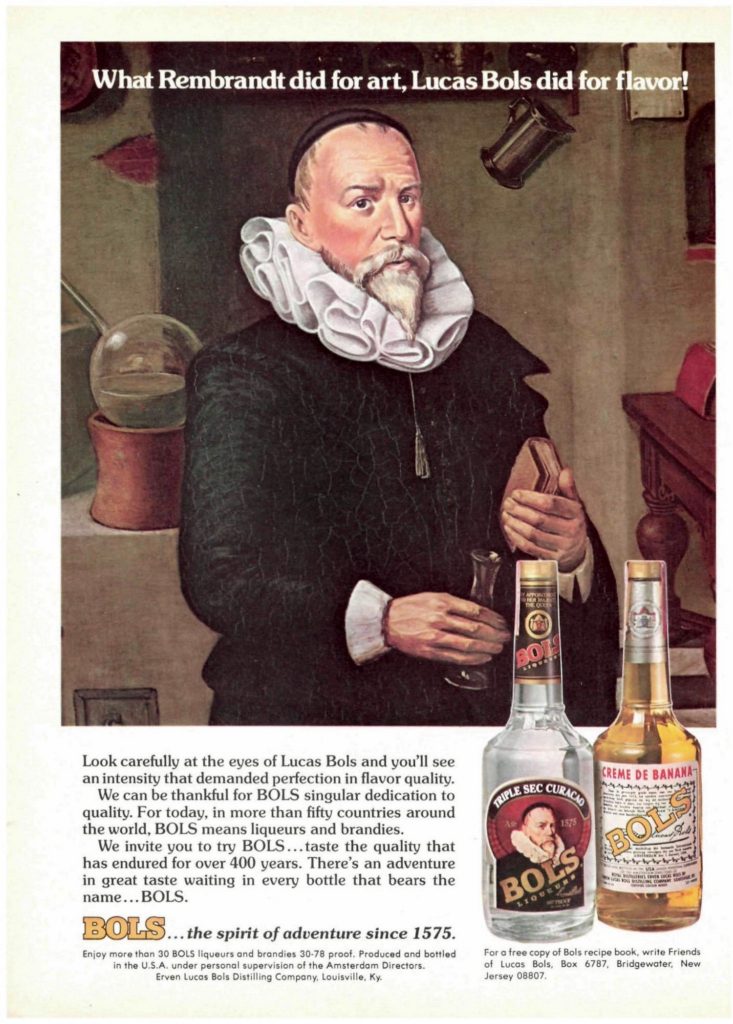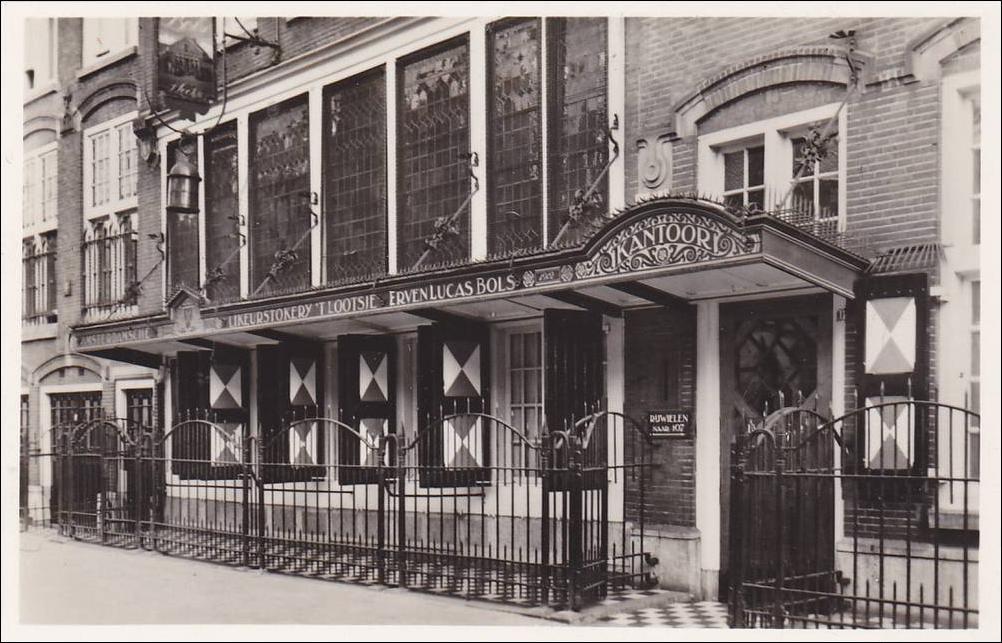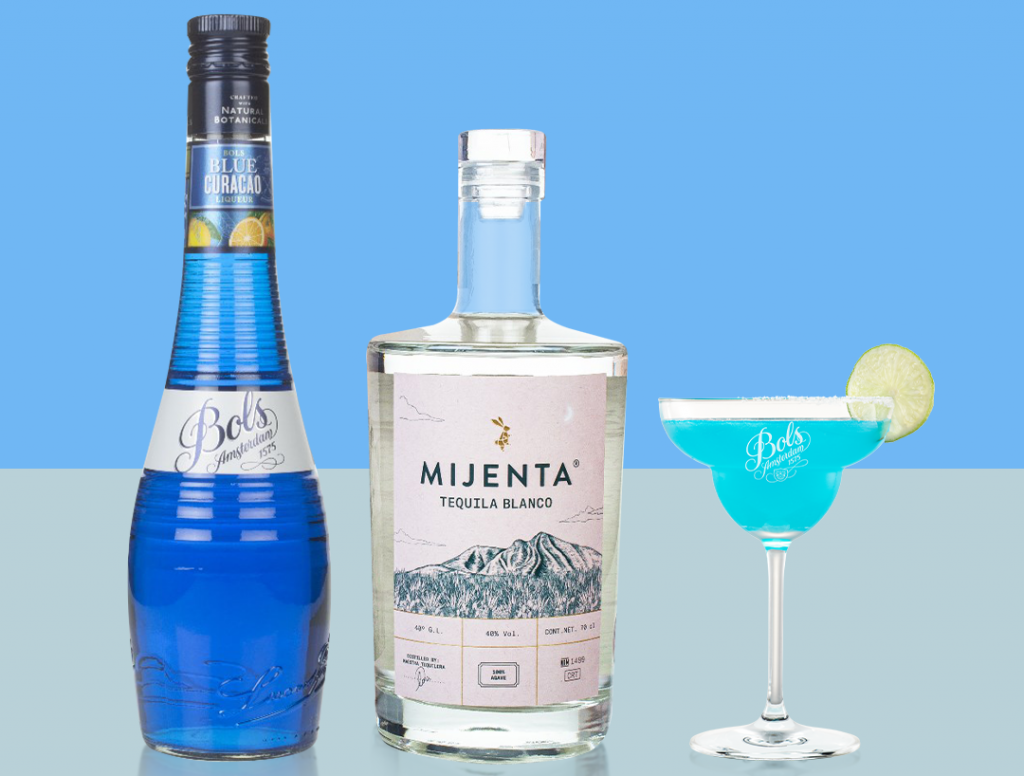Today we’re taking a look at a company with some of the richest history in drink: Lucas Bols. From its beginning in 16th century Amsterdam, its liqueurs and spirits are in pretty much every bar in the world. It’s quite a story.
I wrote a book a few years ago called Empire of Booze looking at the British influence on alcoholic drinks. If it was successful, I envisioned a sequel looking at other enormously influential countries for alcohol, Republics of Booze, perhaps, and top of the list would be the Netherlands. Sadly so far the silence from publishers has been deafening.
Well, they are missing a trick because the Dutch influence is everywhere: brandy is a Dutch word coming from brandewijn meaning burnt wine, gin comes from geneva, and we owe great wines like Chateau Lafite to Dutch engineers who drained the swamp north of the city of Bordeaux to create the Medoc.
The Lucas Bols story
Then there’s liqueurs. For over 400 years it’s a Dutch company that bartenders around the world trust when pouring triple sec, creme de cacao or blue Curaçao, Lucas Bols. I spent some time on Zoom with the company’s creative and communications director Sandie van Doorne.
The Bols story begins in 1575 when the family began producing liqueurs in a small distillery on the outskirts of Amsterdam, but as the city has expanded, this area is now very much in the urban centre. According to the company’s history, the first flavours used were cumin, cardamom, and orange.
At the time liqueurs were used mainly for health purposes – juniper distillate was thought to be good for settling the stomach – or for special occasions like weddings. There was even one called ‘bridal tears’ made with flakes of gold leaf. These were not everyday drinks.

Lucas Bols himself on an 1979 poster for the US market
The Dutch Golden Age
In 1652, the grandson of the founder, Lucas Bols, took over and began turning the company from a local operation to an international affair. At the time, Holland was going through what’s known as the Dutch Golden Age. The Dutch had fought off domination by the Spanish to become the world’s top mercantile nation with a formidable shipping fleet. When you think of the beauty of old Amsterdam or paintings by masters like Vermeer and Rembrandt, this is the period.
Much of this wealth came from spices and other valuable goods from the east shipped by the VOC, the Dutch East India Company. In 1700, Lucas Bols became a major shareholder, giving him access to the finest spices from the orient. He would give bottles to seafarers so wherever the Dutch went, which was everywhere, Bols liqueurs went too.
As well as liqueurs, the Bols name is strongly associated with genever, Dutch gin. This was a rough spirit at the time according to van Doorne, but the Bols company elevated it into a fine spirit made from rye, wheat, and malted barley. Nowadays the company makes a vast array of traditional genever including aged and single cask expressions. Unlike London gin, it’s made from a base spirit with a rich character.
100 years ahead of the English
If all this sounds familiar – spices brought from the east, a great explosion in wealth, for some, and the elevation of a rough spirit – it’s because a similar thing happened in London and with gin but roughly 100 years later. As with many things, not just alcoholic, the Dutch were there first. In fact, the Bank of England was modelled on the banking system in the Netherlands.
While London gin ruled in Britain, the heavier Dutch original found a home in the US, initially brought by Dutch immigrants. It proved immensely popular and if you look at old cocktail books, there are recipes that call for something called Hollands Gin. Jerry Thomas, cocktail pioneer, only used four base spirits, rum, brandy, whisky and genever in his 1862 book, Jerry Thomas’ Bartenders Guide.

Lucas Bols distillery in 1940
The family sells up
Meanwhile back in Amsterdam, the last male Bols heir died in 1816. The family sold the company, to the magnificently-named Gabriel Theodorus van ‘t Wout, but with the proviso that the name Lucas Bols (who died in 1719) should be on the bottles in perpetuity thus keeping the name alive. In 1868, the Moltzer family acquired Lucas Bols and it remained with them until it was floated on the Dutch stock exchange in 1954 before a merger with Remy Cointreau in 2000.
In 2006, van Doorne was part of a management buyout which returned the company to Dutch hands. And in 2014, Lucas Bols began distilling again in Rozengracht, near the site of the original Bols distillery. Bols had come home.
Semper idem
The key to Bols success has been consistency. The firm’s motto is semper idem – always the same. According to van Doorne the technology such as distillation, maceration, and percolation hasn’t changed much in 400 years. Many of the recipes are based on the originals created by Lucas Bols. But, she added: “we have changed over time with current flavours.” The trend now is for “natural botanicals” compared with the “big flavours” 1980s. “In the old days, we didn’t always use natural ingredients,” she said. As well as Bols-branded products, the company owns a portfolio of other drinks including Galliano.
To keep up with the times, Bols works closely with bartenders. The company has the Bols Academy (see photo in header) where it trains bartenders and it runs cocktail competitions. The very bottles are designed for use by professionals with non-slip rings for ease of handling.

Blue Bols cocktail bundle
For the home bartender
But Lucas Bols is now aiming to move out from behind the bar and into the homes of customers. Hence things like the cocktail finder on the Bols website so you can make use of Bols products at home. We made a Brandy Alexander yesterday, and very nice it was too. During Covid, the team speeded up the development of RTD cocktails which will be arriving in Britain very soon.
It’s a remarkable story of over 400 years of Dutch booze know-how, surely there’s a book in there somewhere. Publishers, it’s over to you.
